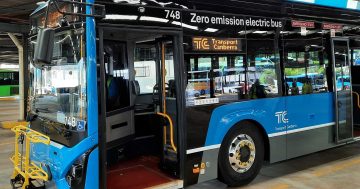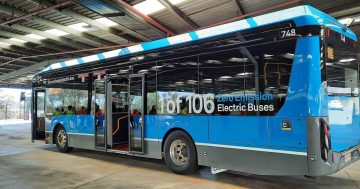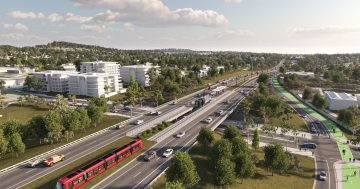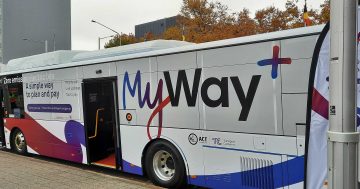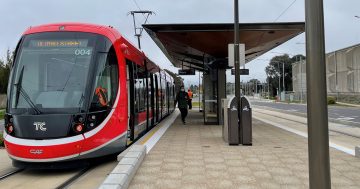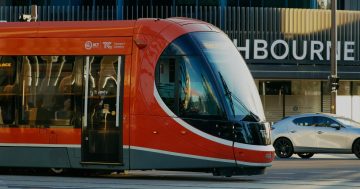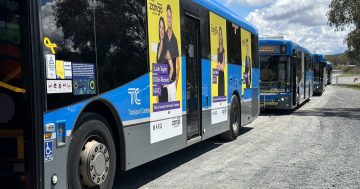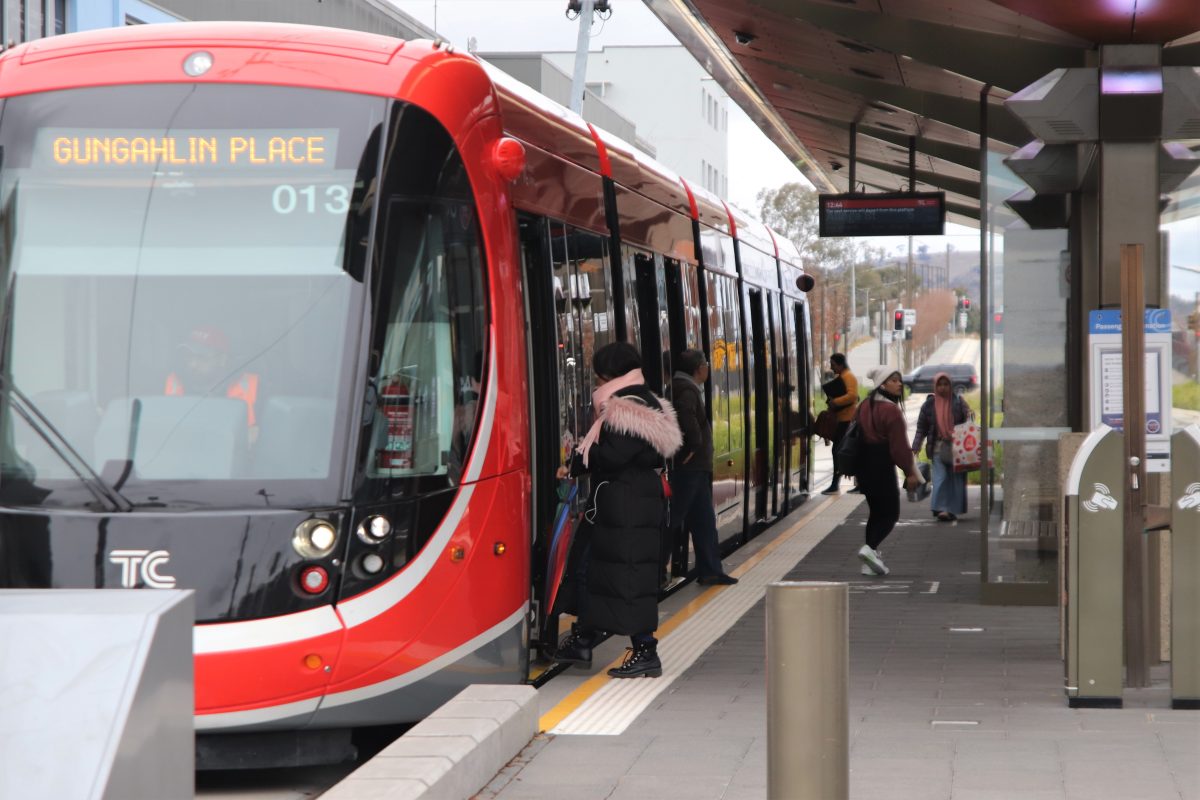
Would electric buses be a cheaper and lower-emissions alternative to extending light rail? Photo: Damien Larkins.
We don’t know how much Canberra’s light rail has cost so far, nor how much more it will cost in the future. Why is that? We know it’ll be in the billions of dollars but how many billions?
The government says it can’t tell us because it’s ”commercial-in-confidence”. Rubbish – these are ratepayer funds and all Canberrans have a right to know.
We also haven’t seen any figures on the Green House Gas (GHG) emissions associated with the construction of the new light rail.
While much is made of the fact operation of the system will be emissions-free, assuming green energy, there are emissions generated as a result of the steel fabrication processes needed for the rails. The same goes for the wires and other supporting infrastructure. To suggest that light rail is GHG emissions-free is nonsense.
We know that for every tonne of steel produced, 1.4 tonnes of CO2 is also produced and thrown into the atmosphere. So that is likely to be more than 5000 tonnes of emission of CO2 for the Gungahlin part of the light rail. Manufacturing electric buses won’t create anywhere near that output.
So, the ACT Greens should be able to explain why light rail is better for the environment when we could use buses.
On the cost side of things, I believe we can save Canberra taxpayers more than $3 billion by replacing the light rail with electric buses moving down the centre of Adelaide Avenue – and to destinations far beyond Woden Town Centre. There will still be stations but no rails or overhead lines.
This is not my idea. Many people have suggested from the outset that this option was a cheaper and more sensible approach to this secretive light-rail fantasy of the ACT Government. Perhaps back then we didn’t have good quality electric buses, but we definitely do now.
What is going on? Why the secrecy? Why the continued expenditure of funds that could be spent in key areas such as health and education in the Territory? Or not spent at all and used to reduce the increase in our rates?
Some years ago, it was announced that the ACT Government and UnionsACT had an MOU whereby union officials were given access to tenders made for ACT Government work.
We were told it wasn’t a secret – it was just that no-one was told.
Why would a government secretly give non-public officials access to commercial-in-confidence information from private-sector businesses?
The union officials don’t report to an Assembly committee. They are not bound by rules, checks and balances like public servants.
The whole aim was to give unions power of veto over decisions by the public service so the right big business firms win the contracts.
It wasn’t long after this that a letter emerged from the head of UnionsACT castigating the Government for sending ministers along to a Master Builders annual dinner without first getting permission from them. Further proof that the government tugs its forelock to the unions.
Now there are allegations of union shenanigans with the tender process for work on Campbell Primary School, suggesting that this agreement still exists. Maybe not in writing per se, more likely it’s an ”understanding”.
Have the unions demanded that the government continue to build an expensive and unnecessary light rail that will add to the emissions problem we all face, when they could build a much cheaper, more efficient, more flexible, less-polluting electric bus network?
Our rates and land taxes are the highest in Australia. Is this why?












